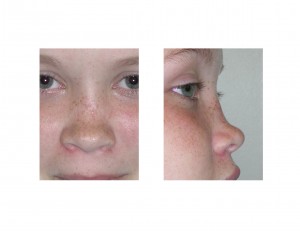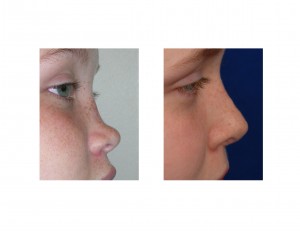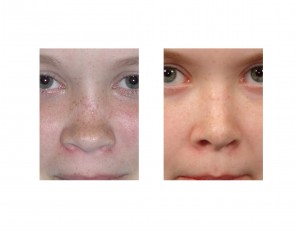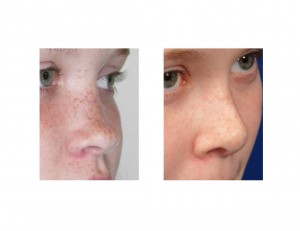Background: The dorsal line of the nose, often referred to as the bridge, looks best in most people when it is straight from the top of the nose down to the tip. Disruptions of a straight dorsal line is one of the most common reasons people seek rhinoplasty, usually because a hump exists creating a convex deformity of the nasal dorsum. Concave or saddle deformities of the nose are less common but pose challenges of addition unlike reduction of the nasal hump problem.
The saddle deformity is a well known nasal condition and is appropriately named because it looks like a saddle. It results from the lack of support of the nose in the middle, most commonly because of loss of underlying septal height. The septum is either fractured and telescopes inward or develops nourishment problems from an untreated hematoma or drug-induced vasoconstriction. It is known to have a variety of causes but the most common today are trauma, an overaggressive rhinoplasty, and cocaine abuse.
The treatment of the saddle nose deformity is based on restoring height of the dorsal line which requires cartilage as well as straightening of the deviated septum. In some cases, there may even be a hole in the septum that needs to be repaired as well. Cartilage grafting is always needed and the choices become either ear or rib donor site harvests. Due to the volume of graft needed, both ears usually need to be harvested as opposed to a single rib graft.




The saddle nose deformity always requires some form of augmentation and cartilage grafting should always be used. The hardest part is to properly shape the graft and prevent it from warping later. Rib grafts provide unparalleled amounts of cartilage but double ear grafts could also be used of the saddle nose is not that severe. A diced and wrapped approach to cartilage grafting of the dorsum allows good molding and low risk of secondary deviation and asymmetries.
Case Highlights:
1) The saddle nose deformity is collapse of the bridge of the nose, usually from trauma, that creates a concave shape or saddle appearance to the upper half of the nose.
2) Augmentation rhinoplasty for saddle nose requires a generous amount of cartilage from which the rib is the best choice as a single site harvest.
3) A diced rib graft for the dorsum combined with a solid columellar strut corrects the saddle bridge deformity and derotates the tip of the nose.
Dr. Barry Eppley
Indianapolis, Indiana


